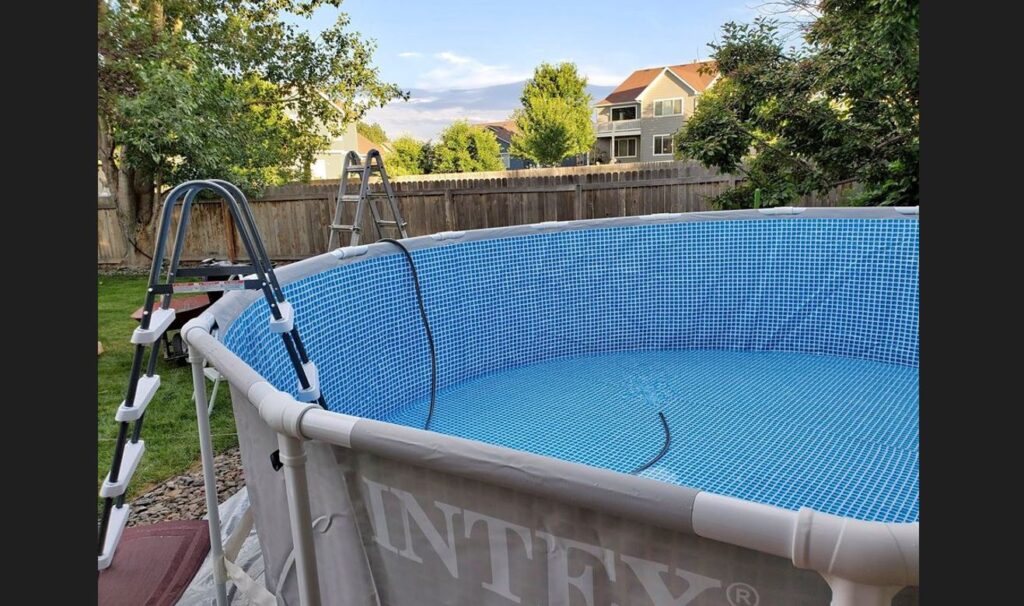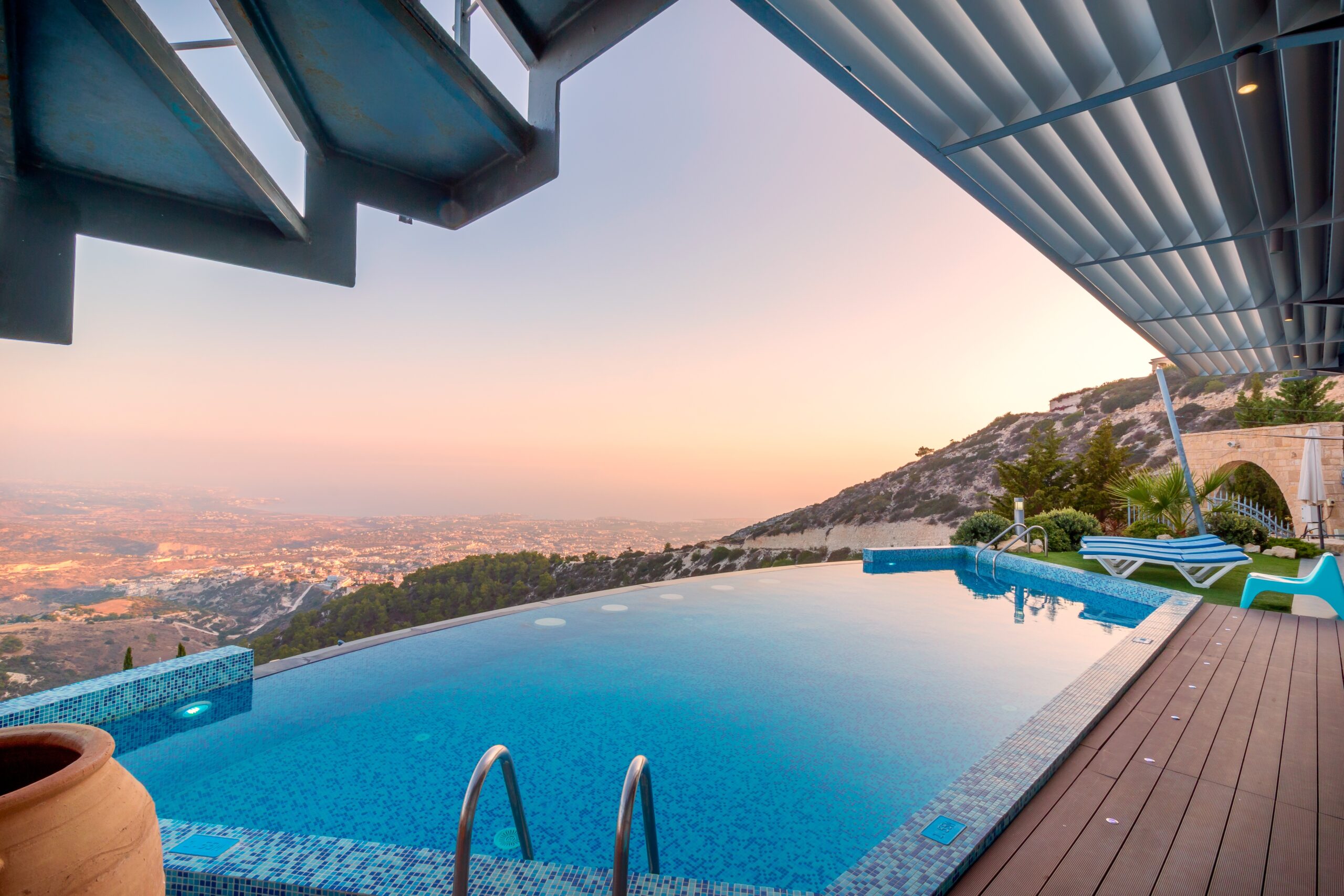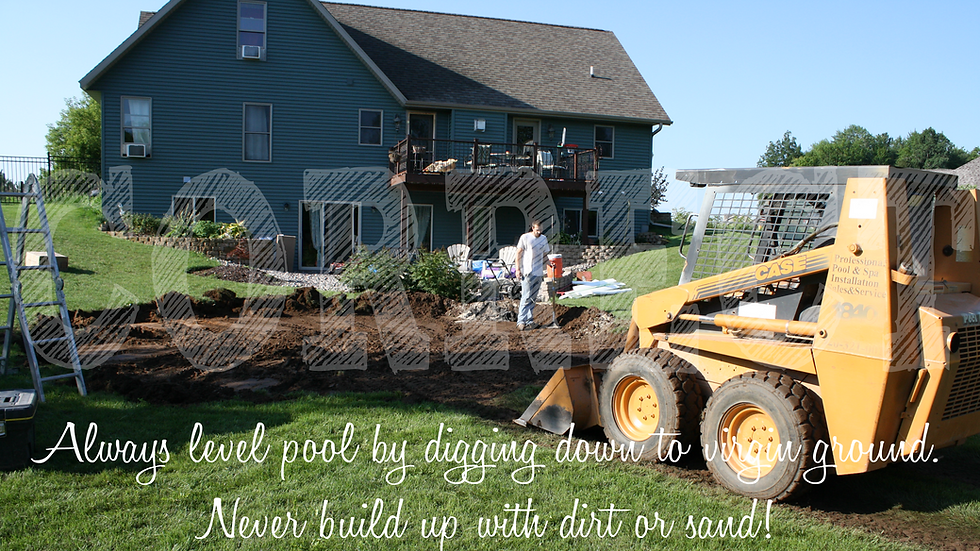Are you considering adding a pool to your backyard but unsure of how to enhance its surroundings? Look no further! In this article, we will compare the pros and cons of artificial and natural landscaping for above ground pools. Whether you prefer the low maintenance and versatility of artificial landscaping or the authentic beauty of natural landscaping, we’ve got you covered. So, let’s dive in and explore the options that will make your pool area the envy of the neighborhood!
This image is property of backyardsidekick.com.
Artificial Landscaping
1. Cost
When it comes to the cost of artificial landscaping, there are a few factors to consider. The initial price of installing artificial turf or other artificial elements may be higher than that of natural landscaping, but the long-term cost can be lower. With artificial landscaping, you won’t have to spend money on fertilizers, pesticides, or watering systems, which can add up over time. Additionally, artificial materials tend to require less maintenance, saving you both time and money.
2. Maintenance
One of the major advantages of artificial landscaping is the minimal maintenance required. Unlike natural landscaping, which requires regular mowing, pruning, weeding, and watering, artificial landscaping only needs occasional cleaning and brushing to keep it looking its best. This makes it a great option for those who have a busy schedule or simply don’t enjoy spending their weekends working in the yard. Artificial landscaping also eliminates the need for harmful chemicals, reducing the environmental impact and making it safer for children and pets.
3. Installation
Installing artificial landscaping can be a straightforward process. Whether you choose artificial turf, synthetic decking, or other artificial materials, the installation generally involves preparing the area, laying down the base, and then installing the artificial elements. While it may require some initial effort, once it’s done, you’ll have a beautiful and low-maintenance landscape. If you’re not confident in your DIY skills, you can always hire a professional to handle the installation for you.
4. Aesthetics
Artificial landscaping offers a wide range of aesthetic options. With artificial turf, you can achieve a lush green lawn that remains consistent throughout the year, regardless of weather conditions. Additionally, artificial plants and trees can provide a vibrant and realistic look without the need for constant care. Whether you prefer a modern or traditional style, artificial landscaping allows you to create the desired aesthetic appeal for your outdoor space.
5. Durability
When it comes to durability, artificial landscaping has a clear advantage over natural landscaping. Artificial materials are designed to withstand the elements and can resist fading, discoloration, and wear and tear. Whether it’s exposure to the sun, heavy foot traffic, or extreme weather conditions, artificial landscaping is built to last. This means you won’t have to worry about patches of dead grass or plants dying off, ensuring that your landscape remains beautiful all year round.
6. Flexibility
Another benefit of artificial landscaping is its flexibility. Artificial elements can be easily rearranged or replaced to modify your landscape design as your needs or preferences change over time. Whether you want to add or remove certain elements, rearrange the layout, or make other adjustments, artificial landscaping allows for easy customization. This flexibility gives you the freedom to create a landscape that suits your evolving tastes and lifestyle.
7. Safety
Artificial landscaping is designed with safety in mind. Unlike natural landscaping, which may harbor pests or be prone to sudden changes in terrain, artificial elements provide a stable and safe environment. Artificial turf, for example, is specifically engineered to be slip-resistant and provide a cushioning effect, reducing the risk of falls and injuries. With artificial landscaping, you can have peace of mind knowing that your outdoor space is safe for your family and friends to enjoy.
8. Environmental Impact
While artificial landscaping offers several benefits, it’s important to consider its environmental impact. Artificial materials are often made from non-biodegradable substances, such as plastics and synthetic fibers. This means that they do not decompose naturally and can contribute to landfill waste. However, advancements in technology have led to the development of more eco-friendly artificial options, such as recycled materials. It’s essential to research and choose environmentally conscious artificial landscaping options to minimize the negative impact on the environment.
9. Accessibility
Artificial landscaping can enhance accessibility in outdoor spaces. Unlike natural landscaping, which can have uneven terrain or require physical effort to maintain, artificial elements provide a level and stable surface that is easier to navigate for individuals with mobility challenges. This accessibility can greatly benefit children, elderly individuals, and people with disabilities, allowing them to enjoy outdoor spaces comfortably and safely.
10. Resale Value
When it comes to the resale value of your property, artificial landscaping can be a valuable asset. The aesthetic appeal and low-maintenance nature of artificial landscaping can attract potential buyers and increase the overall value of your home. Additionally, the durable and long-lasting nature of artificial materials means that your landscape will remain in excellent condition for years, making it an attractive selling point.
Natural Landscaping
1. Cost
The cost of natural landscaping can vary depending on various factors, such as the type of plants, materials used, and ongoing maintenance requirements. While the initial cost of installing natural elements may be lower than artificial options, it’s essential to consider the long-term expenses. Natural landscaping requires regular watering, fertilizing, pruning, and other maintenance tasks, which can add up in terms of time, effort, and financial investment.
2. Maintenance
Maintaining natural landscaping requires regular care and attention. From mowing the lawn to weeding flower beds, natural landscaping demands ongoing maintenance to keep it looking its best. Watering plants, trimming trees, and applying pesticides and fertilizers are all necessary to ensure the health and vitality of your landscape. While some individuals enjoy the therapeutic aspect of maintaining a natural landscape, it’s important to consider the time and effort it takes to keep everything in pristine condition.
3. Installation
The installation process for natural landscaping involves preparing the soil, selecting and planting appropriate plants, and establishing irrigation systems if necessary. Proper planning and design are crucial to ensure the long-term success of your natural landscape. Depending on the complexity of the design and size of the area, installing natural landscaping can be a time-consuming and labor-intensive process. It often requires knowledge of horticulture and landscaping techniques to achieve the desired results.
4. Aesthetics
Natural landscaping offers a diverse range of aesthetic possibilities. From colorful flower beds to lush green lawns, natural elements can provide a vibrant and visually appealing outdoor space. The variety of plants, textures, and colors available in nature allow for endless creative combinations and designs. Additionally, natural landscaping offers a sense of authenticity and connection to the natural world that some individuals find appealing.
5. Durability
The durability of natural landscaping depends on various factors, such as climate, soil quality, and plant selection. While some plants may thrive in certain conditions, others may struggle to survive. Natural landscaping is susceptible to damage from pests, diseases, extreme weather events, and other environmental factors. Regular monitoring and maintenance are necessary to ensure the longevity and health of your natural landscape.
6. Flexibility
Natural landscaping allows for flexibility in terms of design and plant selection. It provides the opportunity to work with a wide range of native or adapted plants that are suited to your specific climate and environmental conditions. Additionally, natural landscaping allows for the growth and evolution of plants over time, which can create a more organic and dynamic landscape. However, it’s important to consider the long-term implications of plant growth and potential maintenance requirements.
7. Safety
Natural landscaping can offer a safe environment for individuals to enjoy outdoor spaces. Well-maintained paths, properly trimmed trees, and carefully selected plants can contribute to a safe and inviting landscape. However, it’s important to be aware of potential hazards, such as thorny plants or uneven terrain, and take appropriate measures to mitigate any risks. Regular maintenance and inspections are necessary to ensure the safety of your natural landscape.
8. Environmental Impact
Natural landscaping promotes environmental sustainability and biodiversity. By using native or adapted plants, you can create habitats for local wildlife and support pollinators. Natural landscapes also aid in water conservation by promoting proper drainage and reducing the need for excessive irrigation. Additionally, natural landscaping can contribute to improved air quality and reduced carbon footprint by capturing and storing carbon dioxide. It’s important to choose sustainable and eco-friendly practices when implementing and maintaining a natural landscape.
9. Accessibility
The accessibility of natural landscaping depends on the design and maintenance practices. Uneven terrain, steep slopes, and other physical barriers can limit accessibility for individuals with mobility challenges. However, with careful planning and the use of accessible pathways, raised beds, and other design features, natural landscapes can be made more inclusive and accessible to a wider range of people. It’s important to consider accessibility needs when designing and maintaining a natural landscape.
10. Resale Value
Well-designed and well-maintained natural landscaping can significantly enhance the resale value of your property. A beautifully landscaped yard with mature trees, vibrant flowers, and healthy greenery can greatly increase curb appeal and make a positive impression on potential buyers. Natural landscaping is often seen as a desirable feature that adds value to a property and sets it apart from others on the market. Investing in a natural landscape can be a worthwhile long-term investment when it comes to the resale value of your home.
In conclusion, both artificial and natural landscaping options have their pros and cons. It ultimately comes down to personal preference, budget, and the specific requirements of your outdoor space. Artificial landscaping offers low maintenance, durability, and flexibility, while natural landscaping provides a more authentic and environmentally sustainable approach. Consider your priorities, lifestyle, and the long-term implications before making a decision. Whether you choose artificial or natural landscaping, the goal is to create an outdoor space that brings you joy and enhances the beauty of your home.








